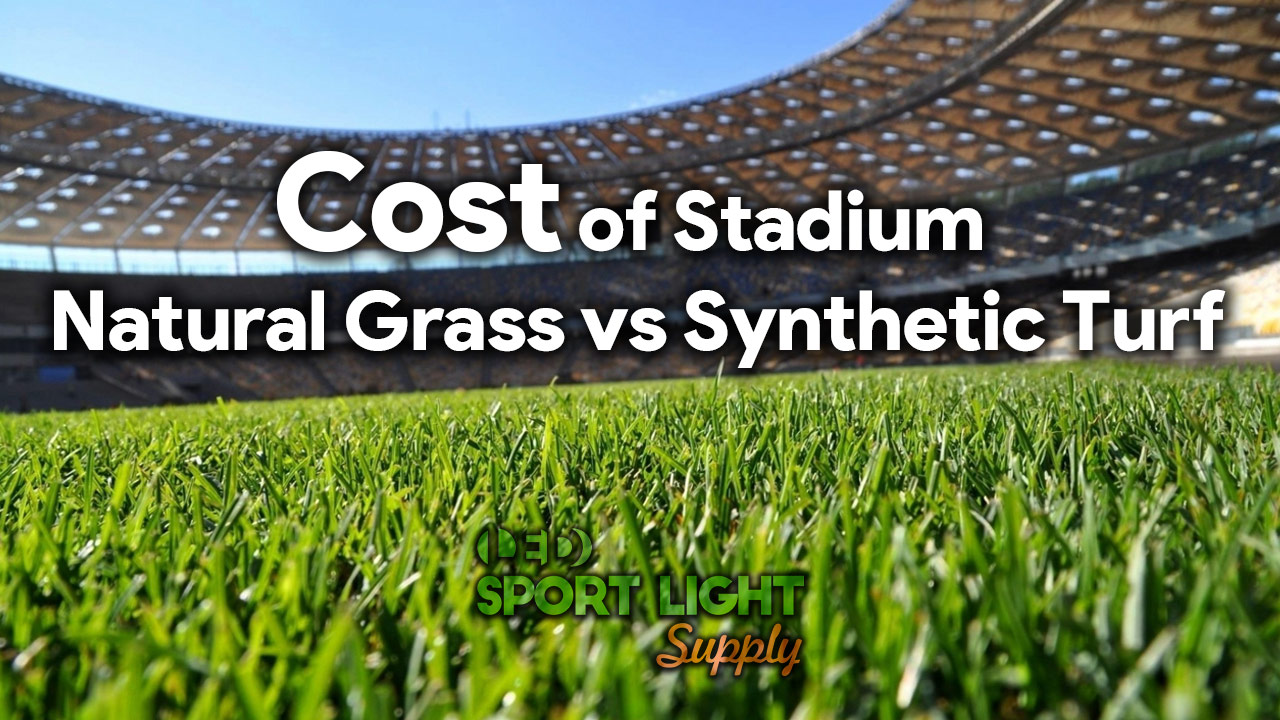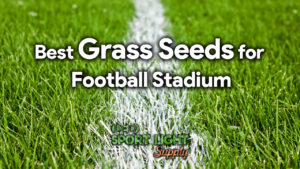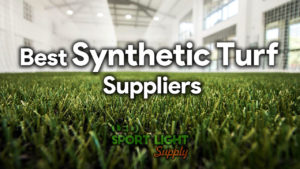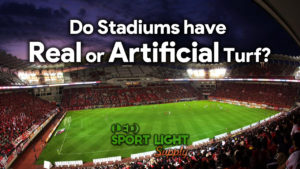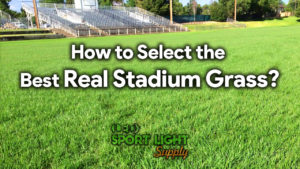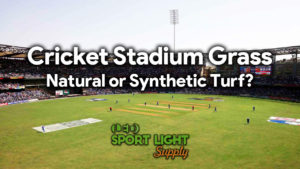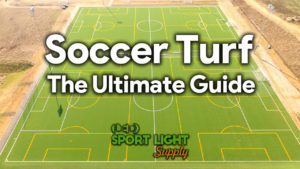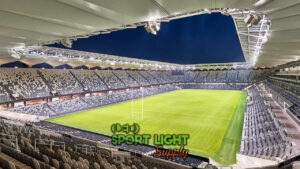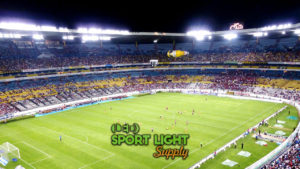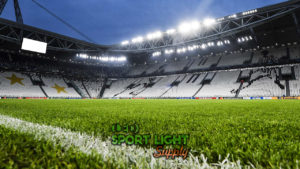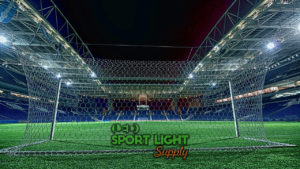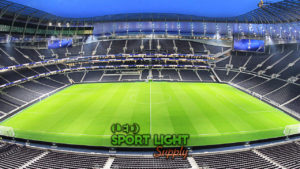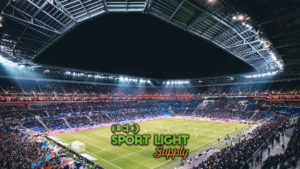Artificial grass is low maintenance, which is better for your budget. But sometimes, you might want to prefer a real turf field no matter the cost. Especially if you own a stadium. In fact, the price point is but a detail among the many factors you need to consider.
Is synthetic turf still worthwhile today? As you might know, astroturf is not the standard in the sports industry as it used to be. Mainly because of the many safety concerns. But fake grass still represents an affordable alternative. So, you might want to know when to implement it for the best results.
Before sharing some of the reasons why an authentic lawn costs you more money than a synthetic one, let’s see the average cost of both options. You might be surprised to find out that neither of them may be better per se. Indeed, you should be aware of the pros and cons of each solution to save more and meet your goals.
The average cost of natural stadium grass
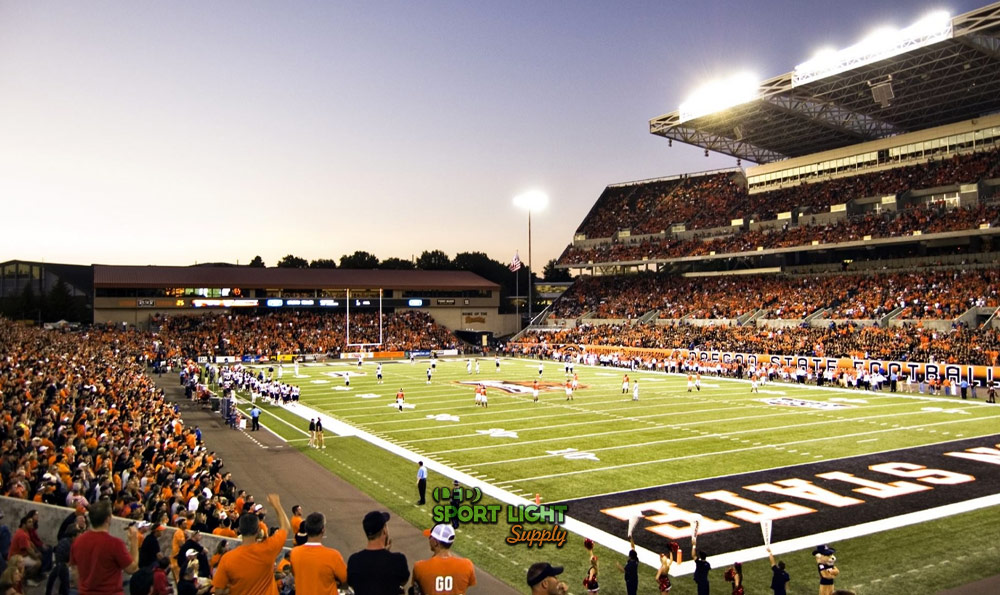
First of all, you need to consider which grass seed to plant. You can choose between many species and varieties. After you select a suitable seed for your area, you need to make sure to get SOD quality seeds. That is, grass seeds that the manufacturer sold you after a quality control to remove any weed seed.
In an outdoor stadium, to seed the whole playing field, you would probably hire a company. As you might guess, the price will vary in accordance with the size of the pitch. The latter changes from sport to sport. For example, men’s soccer field ranges from 60,000 to 80,000 square feet. But the women’s pitch is smaller (from 28,000 to 50,000 square feet).
Thanks to the flat nature of the playing area, we can estimate the cost for 1,000 square feet. Of course, these averages assume that we are talking about a standard pitch field with normal grading (1-2%) and no major bumps. In short, an arena that needs no additional intervention, which costs extra.
A practical example of stadium turf cost
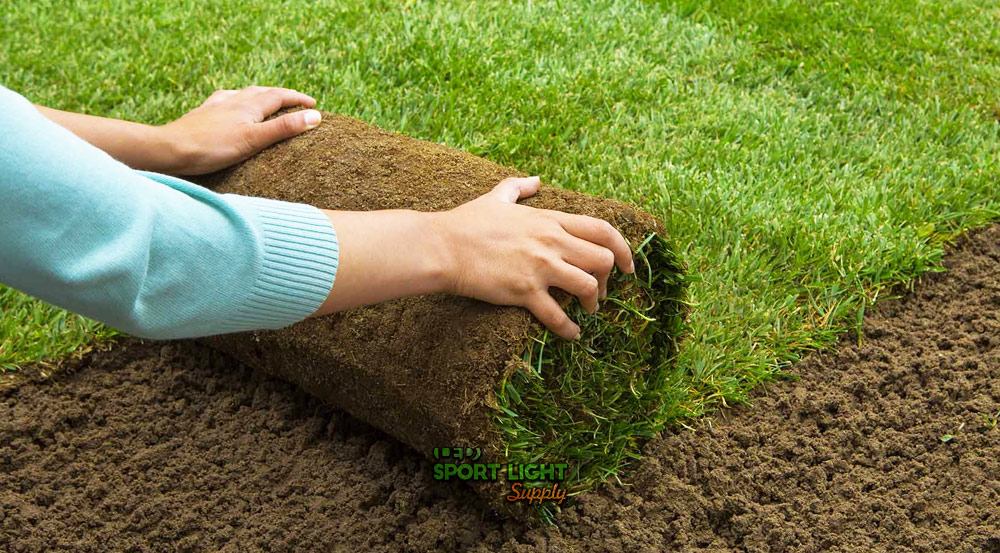
The SOD grass seeds will cost no less than $2.5 per sq ft. So, that would be at least $2,500. If you do not have a sprinkler system, you would add around $2,000. But you can halve that expense if you had a previously installed system or part of it.
From the moment you seed the playing field, you need to take care of it. Perhaps, you might hire a lawn care company to water it consistently and fertilize it at least once a year. But even in the best case scenario, you are looking at no less than $9,000 every 10 years. This estimate does not include aeration or equipment.
Excessive play and traffic will damage the natural grass. So, you will have to overseed the pitch regularly. Usually, a fast-growing grass seed like perennial ryegrass is used for overseeding purposes.
On balance, the price per seed will vary depending on the species and/or variety. The most common species are:
- Bermuda grass
- Kentucky bluegrass
- Perennial ryegrass
- Tall Fescue
Bermuda grass is popular in football stadiums. Instead, you can find Kentucky bluegrass and perennial ryegrass in both soccer and rugby pitches. Finally, Tall Fescue is sometimes used in large areas like a cricket or a baseball stadium (in the outer fields) to overseed bare spots.
The average cost of a synthetic turf field for a stadium
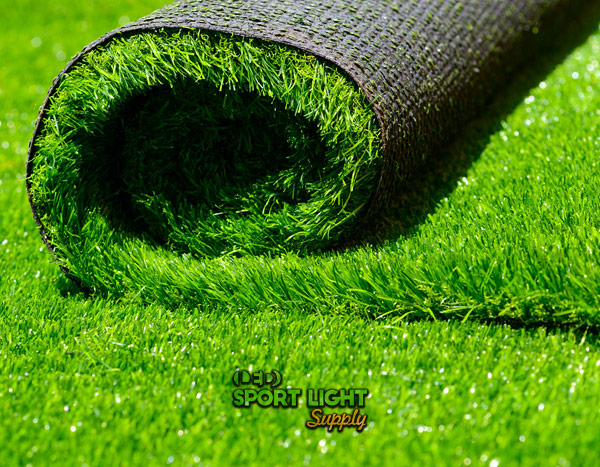 For an artificial turf field, you are looking at around $15 per sq ft. In this case, we are considering a basic product that is similar to astroturf. In other words, not the best synthetic solution available at the moment. Some high-quality products may cost as high as $25 per sq ft. So, expect to pay anything between $15,000 and $25,000 per 1,000 sq ft.
For an artificial turf field, you are looking at around $15 per sq ft. In this case, we are considering a basic product that is similar to astroturf. In other words, not the best synthetic solution available at the moment. Some high-quality products may cost as high as $25 per sq ft. So, expect to pay anything between $15,000 and $25,000 per 1,000 sq ft.
The figure I just listed does not consider any removal of previous turfs. But that is basically it. Even though artificial turf means low maintenance or no maintenance at all, you will still have to pay for some clean-up and inspection from time to time. After all, fake grass has its cons too.
The seams of the synthetic lawn can rupture. Or the color may change due to UV exposure. These inconveniences can cause you troubles in the long run. So, it is better to plan carefully from day one and design the whole system as accurately as possible.
You can always tell a more expensive synthetic turf from a cheap one. Plus, the more expensive products come with a 15-year (or higher) warranty. Then again, you might want to consider many details, such as:
- artificial grass yarn type (it can be Nylon, Polyethylene, or Polypropylene)
- color and gauge (distance between leaf blades)
- durability and backing (the materials that make up the base of the turf field, which may influence the stitch count)
- thickness and thatch (the layer beneath the yarn that enhances recovery)
- total weight, pile height, and drainage properties
When it comes to materials and yarn quality, they impact both the aesthetic look and texture feel. In a stadium, an abrasive surface like an astroturf surface can lead to injuries. So, you should make sure that synthetic turf fiber is ideal for outdoor sports activities.
What makes third-generation turf fields better than first-generation astroturf?
When comparing synthetic grass products, you might find that some are easy to install while other focus on a natural look. For sports activities in a stadium, a lush and realistic look is crucial. But you should look out for signs of high-quality manufacturing as well. After all, artificial turfs are on the soccer fields and football fields where millions of children may play and get hurt.
You should avoid cheap and old products because of the material used as a kind of granular synthetic dirt between the pieces of the artificial grass. Indeed, the old and cheapest first-generation turfs can contain lead and heavy metals.
As a result, crumb rubber or black dots in the turf field can cause several health issues. The chemicals contained in these particles are usually carcinogens and could lead to developing cancer.
About turf safety
Turf safety is often a guarantee of superior products. Of course, you should not wait for negative health effects to show up. So, inspections can help you on this matter.
Third-generation surfaces are more durable. That is why most professional associations like FIFA and NFL approve of their use. For comparison, astroturf had a shallow surface and no installation process. No sand or gravel was involved. The installer would just roll out a green carpet that simulated fake grass over the ground.
Today, no professional players play on astroturf. Astroturf and first-generation turfs are primitive and obsolete. Third-generation turf fields simulate real grass in the best way possible.
You might find the latest generation grass under the name 3 AG (or 3G) and 4 AG (or 4G). The price for a 3G pitch for football, rugby, hockey, or soccer can be anywhere between $30,000 and $40,000.
Why is natural grass more expensive than artificial turf?
On balance, real grass is not always more expensive than artificial turf. But if you consider the problems attached to it, it usually ends up costing you more than artificial turf. This is because of wear and tear. Besides, maintenance can be impossible during the winter. Instead, astroturf and similar products will never burden your budget or force you to reschedule a match or event.
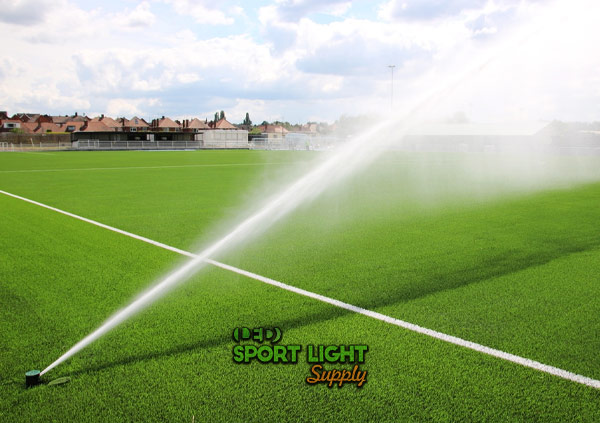 All throughout the year, you need to water your authentic lawn to keep it green. So, watering it can cost you a lot of money. Especially during summer. On the bright side, when the temperature rises, natural grass is not as hot as synthetic turf. In a stadium, a hot playing surface means dehydration issues for the players. Which can lead to injuries and bad performance that hurts the revenue.
All throughout the year, you need to water your authentic lawn to keep it green. So, watering it can cost you a lot of money. Especially during summer. On the bright side, when the temperature rises, natural grass is not as hot as synthetic turf. In a stadium, a hot playing surface means dehydration issues for the players. Which can lead to injuries and bad performance that hurts the revenue.
Maintenance means taking care of patchy and weedy spots that may influence the athletes’ performance negatively. Then again, the use of fertilizer is necessary to keep the whole pitch green. Without maintenance, the lawn may not wake up from the winter in line with the sports season calendar. Or it could shut down too early before the cold seasons start. But of course, the more maintenance you need, the more it costs you. The cost can greatly vary from one geographical area to the next. So, some stadium owners just find an astroturf alternative less expensive than real grass.
1. Are premium grass seeds worth it?
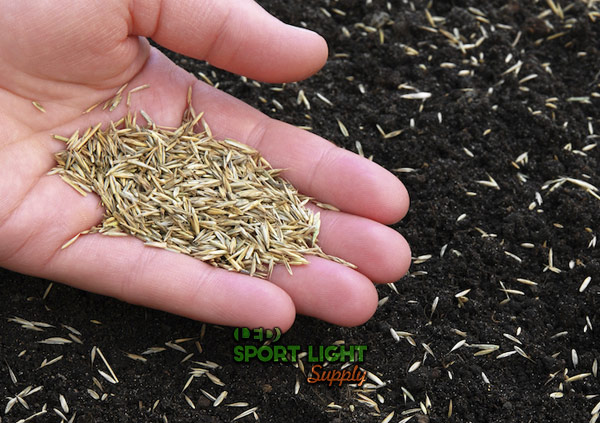 Broadly speaking, yes. As you shop for grass seeds, you might find premium seeds that cost around $80 or even $100 for a 5 lb bag. Often, manufacturers sell premium seed by promising you:
Broadly speaking, yes. As you shop for grass seeds, you might find premium seeds that cost around $80 or even $100 for a 5 lb bag. Often, manufacturers sell premium seed by promising you:
- a darker color
- disease resistance
- improved drought tolerance
- shade tolerance
In actuality, seed varieties start with product demand. Manufacturers do a lot of polling and ask many questions from the consumers. So, you might want to understand who that particular grass seed variety is for before purchasing it.
Manufacturing companies have research centers and trial sites. Usually, one in the Northeast and/or Northwest coast, one in the Transitional zone, and one in the South. Here, they test different variables. For example, in the Northeast, they can test for color and cold temperature tolerance.
In the Transitional zone, the main focus is on heat, humidity, and disease tolerance. This is where a blend of different species can be tested as well. On the Northwest side, you can review traffic tolerance and overall quality. Especially near the cities with the best weather all year round.
2. Why pay more for grass seeds?
What you pay for is better genetics. In brief, the manufacturers take the healthiest plant varieties they can find and clone them. Every year, a process of elimination takes place to remove the plants that are not doing as well as the others. As the grass matures, they remove plants showing signs of stress.
Over a period of seven to eight months, from October to May, only the strongest and the fittest varieties survive. But this process can go on for up to three years until they form mature seed heads.
After the selection of the aptest varieties, production starts in separate facilities. Premium seeds have higher germination rates. So, the farmers can plant each variety on a large scale and then collect the seeds you buy with a combined harvester.
How to save money when buying natural turf or synthetic grass for a stadium?
Saving money when buying a natural SOD turf
a) Improve the irrigation system
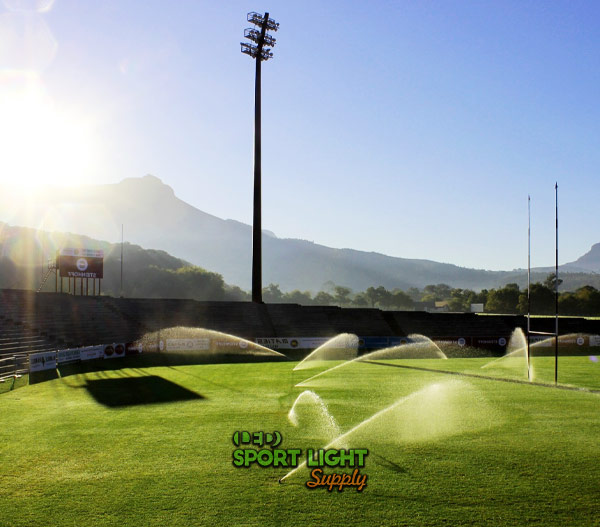 The first thing to lower your expenses is to improve the irrigation system. In particular, you should opt for watering the real grass regularly and deeply. Most stadium owners put on their sprinklers for as little as 30 minutes every now and then. In this way, the sprinkler turns on often: two or three times every week. But that is not the ideal way to do it. If you want to keep your pitch green, you should put your sprinkler on once a week for two or three hours straight.
The first thing to lower your expenses is to improve the irrigation system. In particular, you should opt for watering the real grass regularly and deeply. Most stadium owners put on their sprinklers for as little as 30 minutes every now and then. In this way, the sprinkler turns on often: two or three times every week. But that is not the ideal way to do it. If you want to keep your pitch green, you should put your sprinkler on once a week for two or three hours straight.
Very deep watering is better than a frequent one. Depending on where your stadium is, you need to adjust the timing to allow the sprinkler to put out a suitable amount of water. Otherwise, most of the water will evaporate before it can reach the soil. If that happens, no moist soil will hydrate the plants, thus keeping the leaves blades green. If you water the field extremely deep once a week, the uppermost layers of the ground will dry out in between each watering session. Of course, you should aim for a better frequency in order to not put stress on the grass. But start with just one watering per week and work from there. You must avoid using too much water because the plant may drown.
b) Regular mowing is key
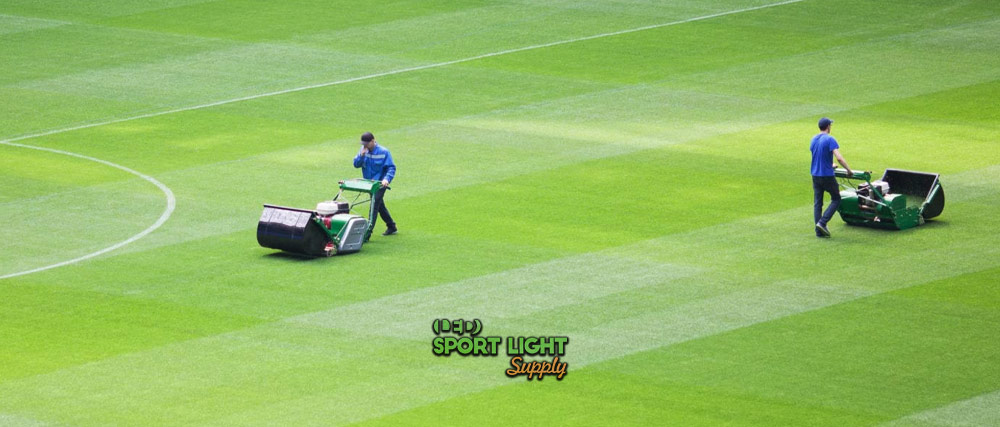
Another critical tip about attending to a natural grass pitch has everything to do with mowing the grass blades. For starters, there are several mowing techniques that you might want to consider.
For one thing, you should sharpen and clean the lawnmower blades every few mows. In this way, you help your grass fight disease and fungal infection off.
Next, you could alter the mowing pattern that you usually follow. Changing your mowing pattern matters because it impacts the frequency of mowing. In fact, when you pull your lawnmower out and cut the grass more frequently, that will make the biggest difference in the health of the playing field. The shorter you keep the lawn, the better.
In most lawnmower manuals, manufacturers suggest you do not cut more than one-third of the grass blade for improved runtime. If your grass is only an inch tall, you should not let the grass blades get above one and a half inches before you cut it again.
During the heavy growth seasons, you should keep the lawn that short. The playing area will perform much better. Mainly because you will not stress the grass out by cutting too much off at a time. In a way, you train the grass crown to be at a certain level above the soil.
c) Take care of weeds
Lastly, you need to root out the weeds. This may require manual labor with digging and pulling. But in the end, you can buy equipment and chemicals that help you. As a result, you can apply weed killers on the ground safely while keeping an appealing look for the fans and TV broadcasters.
Saving money when buying a synthetic turf field
Turf installation is harder than seeding a pitch. Even with the right equipment, it takes a lot of experience to avoid messing up the base and sub-base underneath the artificial turf field. In detail, the lower layers need to be perfect and level to allow for safe use.
A DIY installation of artificial grass can positively impact your budget. However, you would be better off trying to install it yourself if you already saw the whole process from start to finish at least once.
Typically, manufacturers produce rolls with varying widths. So, you will need the appropriate tool to move and lay down the rolls themselves. When you know how to install the turf field, you can save more and order the right rolls. This means no cuts and no waste. You would just drop the roll and staple or nail it where you need to.
Before you start
Before you can lay down to rolls, you need to prepare the pitch. In brief, you need to start from a solid bedrock and fill the whole field with dirt. Then, you need to create the ideal moisture condition and compact it well. A completely level playing surface will not help drain the rain. So, you need to achieve a 2% slope.
With artificial turf, you can always switch to a cheaper imitation. In this case, you can spend as low as $8,000-9,000. Of course, you can still find plenty of products at $6 per sq ft. But as the price goes lower and lower, do not expect long-lasting, high-quality products. If nothing else, you should factor in the repairs and stadium downtime.

